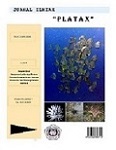The Growth of Hard Coral (Acropora sp.) Transplants in Coral Reef of Malalayang Waters, North Sulawesi, Indonesia
DOI:
https://doi.org/10.35800/jip.1.4.2013.3703Abstract
Main coral reef building components, Scleractinian corals, has the highest distribution in Indonesia, at least 590 species known of 793 species in the world. Studies on damaged coral community transplantation have been done to observe their growth and adaptation ability.
A four-month observation found that average length increment at 9 M deep was linearly 0.375 cm, 0.632 cm, and 0.732 cm at the first, second, and third month, respectively, at 6 M deep, it was 0.455 cm, 0.689 cm, and 1.012 cm, at the first, second and third month, respectively, and at  3 M deep, it was 0.55 cm, 1.05 cm and 1.1, at the first, second, and thrid month, respectively. Mean relative length increment at 9 M deep occurred every month as much as 4.25%, 8.23%, and 9.86% at the first, second, and third month, respectively. Similarly, it occurred in 6 M deep, 4.12%, 9.14%, and 11.28% at the first, second, and third month, respectively. However, at 3 M deep, it occurred only at the first and second month, 7.33% and 12.73%, while it declined at the third month, 11.7%.
Keywords : Ecosystems, Coral Reef, Scleractinia, Malalayang, Manado
Downloads
How to Cite
Issue
Section
License
COPYRIGHT
Authors who publish with this journal agree to the following terms:
Authors hold their copyright and grant this journal the privilege of first publication, with the work simultaneously licensed under a Creative Commons Attribution License that permits others to impart the work with an acknowledgment of the work's origin and initial publication by this journal.
Authors can enter into separate or additional contractual arrangements for the non-exclusive distribution of the journal's published version of the work (for example, post it to an institutional repository or publish it in a book), with an acknowledgment of its underlying publication in this journal.
Authors are permitted and encouraged to post their work online (for example, in institutional repositories or on their website) as it can lead to productive exchanges, as well as earlier and greater citation of the published work (See The Effect of Open Access).






































